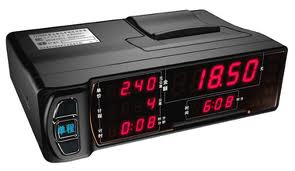 It’s safe to bet that nearly every time you’ve taken a cab, the metered fare that you pay has been based on a combination of mileage and time. We’ve all sat in the back seat of cabs and watched the fare numbers on the meter click over with each block driven.
It’s safe to bet that nearly every time you’ve taken a cab, the metered fare that you pay has been based on a combination of mileage and time. We’ve all sat in the back seat of cabs and watched the fare numbers on the meter click over with each block driven.
The concept of “pay as you drive” (PAYD) car insurance seems pretty simple, and in reality, isn’t all that different than paying for a cab ride. The fewer miles that you drive, the risk that you’ll get into an auto accident decreases, so the less distance you drive with PAYD, the less you’ll pay for insurance.
Every driver who has ever applied for car insurance is asked how many miles they drive in a given year and how the car is used (work commuting -vs- casual use, etc.). In truth, this honor system declaration has had relatively minimal impact on car insurance quotes, at least until now.
Car insurance companies have started to acknowledge that the number of miles that you drive in a year actually does have a significant impact on risk. The question has always been – how can actual driving mileages be monitored, so that a low mileage driver really can be rated as a lower risk, and receive the benefit of appropriate car insurance discounts?
Technology is helping to enable this trend toward ‘pay as you drive’ and metered auto insurance. Several car insurance companies, including State Farm, Progressive, and Liberty Mutual, have introduced discount programs that require the use of onboard monitoring devices. These devices provide (in some cases) instant feedback to car insurance companies regarding time driven, distance driven, and driving habits (such as sudden acceleration or braking).
An insurance company was recently chartered in Texas to provide car insurance to consumers on a ‘pay as you drive’ basis. MileMeter Insurance started writing car insurance policies in 2008 based only on the mileage that a policy holder drives. Insurance is purchased in 1000 mile increments, and policy holders are required to submit digital photos of their odometers every six months to verify miles driven.
A Washington-based study group, Centspermilenow.org, has partnered with MileMeter to research methodology for insuring every driver in Austin, Texas. According to Patrick Butler, Research Director for Centspermile.org, ‘pay as you drive’ is the primary focus of the organization, and they are actually paying the car insurance premium for participants in the research. More information is available at milestation.com.
Clearly, as states such as California and Michigan grapple with providing reasonable alternatives to traditional car insurance, PAYD will continue to make inroads in insurance underwriting. Check with your agent, and do some research on PAYD programs that are available in your state.





